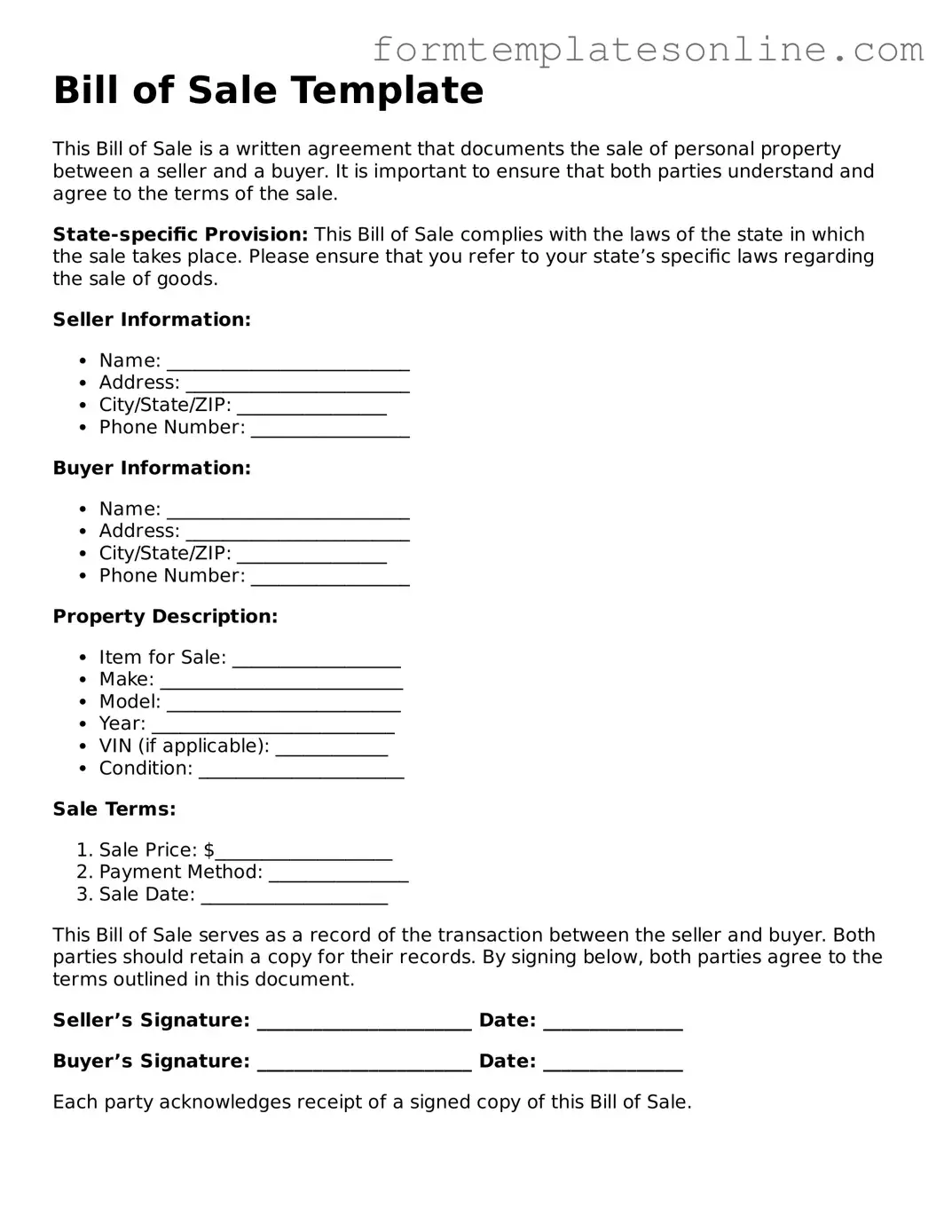Bill of Sale Template
This Bill of Sale is a written agreement that documents the sale of personal property between a seller and a buyer. It is important to ensure that both parties understand and agree to the terms of the sale.
State-specific Provision: This Bill of Sale complies with the laws of the state in which the sale takes place. Please ensure that you refer to your state’s specific laws regarding the sale of goods.
Seller Information:
- Name: __________________________
- Address: ________________________
- City/State/ZIP: ________________
- Phone Number: _________________
Buyer Information:
- Name: __________________________
- Address: ________________________
- City/State/ZIP: ________________
- Phone Number: _________________
Property Description:
- Item for Sale: __________________
- Make: __________________________
- Model: _________________________
- Year: __________________________
- VIN (if applicable): ____________
- Condition: ______________________
Sale Terms:
- Sale Price: $___________________
- Payment Method: _______________
- Sale Date: ____________________
This Bill of Sale serves as a record of the transaction between the seller and buyer. Both parties should retain a copy for their records. By signing below, both parties agree to the terms outlined in this document.
Seller’s Signature: _______________________ Date: _______________
Buyer’s Signature: _______________________ Date: _______________
Each party acknowledges receipt of a signed copy of this Bill of Sale.
